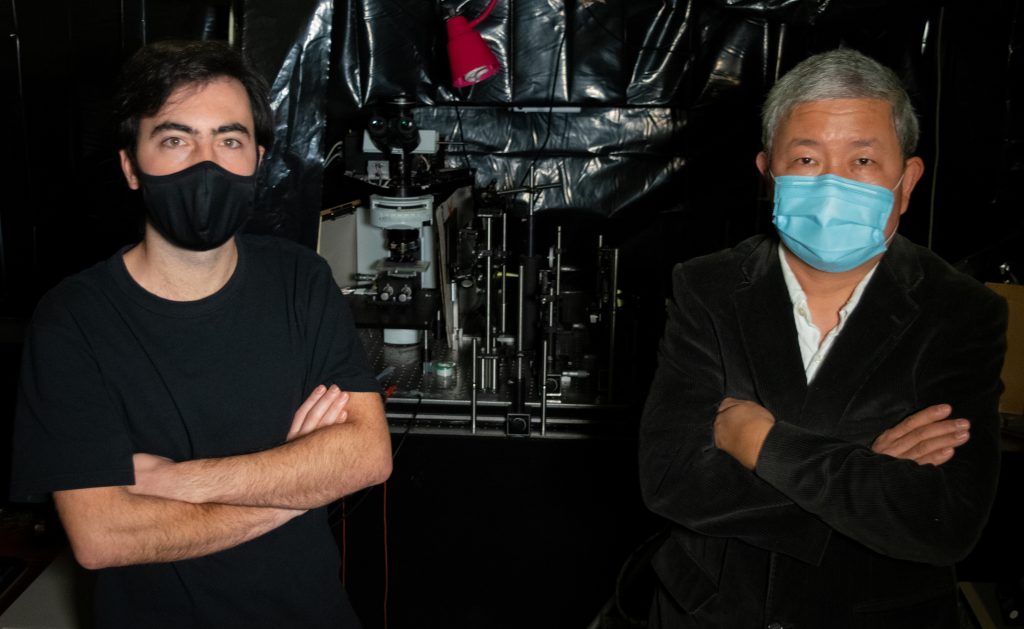
Explain to us what you are examining for this recent NSF grant you received.
This project is to design and manufacture micro-size bolometers that are based on graphene aerogel (GP). GP is a very light material, whose density can be much less than that of air. GP has a very low thermal conductivity, is flexible, and is electrically conductive. In fact, it is a very unique material quite different from traditional aerogels that are hard and non-electrically conductive (for many of them). We will develop a new laser-assisted chemical reduction manufacturing technique to directly manufacture microsize level GP circuits for bolometers. This new laser-assisted technique opens a very novel way in advanced manufacturing that is beyond heating/melting/solidification in current laser-assisted manufacturing.
The abstract mentions that this project has both military and civilian applications. Can you name a couple examples for each of these areas?
Bolometers using the micro-size sensors manufactured in our project will feature super sensitivity (0.05 K), very broad spectrum light detection (<0.4 um to over 20 um), and very fast response (~1 ms). Also they will have very high spatial resolution, and are expected to find broad applications as night surveillance cameras, infrared high solution and sensitivity temperature sensors for industry and research use, and thermographic camera to sense infrared radiation.
Considering Iowa State University’s role as a land-grant institution, will this project have any applications to industries that are especially relevant here in Iowa?
Our technique development could see broad applications in Iowa, such as farm-field high sensitivity and resolution temperature monitoring, remote human body temperature sensing for health condition checking, and wind turbine blade structure health diagnosis.
The K-12 outreach is an interesting component to this project. Why was this included as part of the project? What exactly do you plan to do for this?
This is a great question. In fact, during our lab tour to high school students, we have demonstrated the temperature sensing capability of our material to students, and they are very interested. In this project, each year we will hire one undergraduate student to do paid summer research, and will also high one high-school teacher to support one-month summer intern in our lab to significantly extend the impact of the project on education.
What are some of the mechanical engineering concepts and methods that apply to this research?
The project itself indeed requires multi-disciplinary knowledge, including material synthesis, structure characterization, and thermophysical design and testing. Our lab’s research has gone far beyond the traditional mechanical engineering scope. But the thermophysical design and testing (mechanical engineering research) will play a critical role in the project. Also we will hire students of materials science and applied physics areas to work on the project.
Does this project build upon past work you’ve done?
Yes, this project was built on our past extensive work on graphene aerogel, including synthesis, thermophysical properties studies, structure characterization, and structure domain and interface study using our thermal reffusivity theory. These place us at a very good starting point to conduct the project.
Are there any other individuals or agencies that should be acknowledged here?
This project has no co-PIs, and will be solely conducted at ISU. But I do really appreciate the preliminary results that are developed by my former Ph.D. student: Yangsu Xie, now a professor at Shenzhen University, China. She has done a great job, and was also awarded the ISU Research Excellence Award during her study here.
When did work on this project begin? For how long will this be funded?
This is a 3-year project starting on August 15, 2020 with a total funding of $349,652
Anything else you want to add?
I am so excited to conduct this project. My laboratory has focused mostly on micro/nanoscale thermal transport: design, characterization and control. This is the first project we are focusing on laser-assisted manufacturing. Also this year I have another project funded by DOE [Department of Energy] to conduct research on manufacturing. Our strong technical expertise in theory, micro/nanoscale physics characterization and control will find us unique positions in manufacturing and will enable us to make novel contributions and advances.
